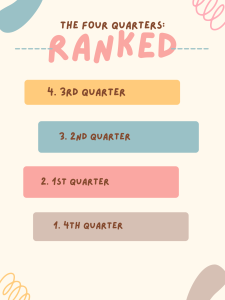Administration Plans for Next Year
May 26, 2017
This year, school administration decided to implement a preliminary class registration program, a policy that caught students off- guard, considering class registration usually does not take place until later in the year.
Many students assumed that the administration’s reasoning behind doing class registration early was to simply decide which classes to cut next school year based on the number of students signed up to take the classes. While enrollment was a factor, it certainly was not the main reason, and is in fact only a part of an multi-faceted process, according to Principal Haywood Hand.
“Right now, we’ve been charged with the criteria that we need to have at least 12 students to a class,” said Hand.
However, Hand mentioned that this criterion is flexible, as exhibited in the case of AP statistics which only has nine students but still functions as a class.
“We want to offer AP stats to those kids who need it, or want to take it; this year, we have nine or 10 students. We can probably live with that,” said Hand.
In addition to showing students what classes are available, class selection also served a scheduling purpose.
“It really wasn’t [class] registration,” said Hand. “It was just trying to get a framework of what courses kids might be more attracted to signing up for. We need to know numbers early so we can make those decisions before the budget is finalized.”
After receiving the numbers from preliminary registration, administration then meets with the chairs of departments to determine how many sections will best fit the number of students signed up for the class. Once this information is finalized, it goes into the master schedule.
However, the simplicity of creating the master schedule ends there. Since RCHS offers so many different levels of courses, it can become difficult for administrators to manage a student’s schedule.
Hand explained, “Everybody takes geometry, but we have four different levels; we have: honors, CP (College Prep), SOL (a course focused on SOL preparation), and AFDA (Algebra, Functions, and Data Analysis).” “So, you’re taking kids and you’re breaking them off into four different class [periods]. Then, [when] you start putting them out in the master schedule, you’re locking this particular group of kids to these two periods.”
When a student is locked into a specific class period, planning the rest of his schedule becomes more difficult because some classes can only be offered during certain periods. Other classes can only offer one period, too, like higher level language classes or some fine arts classes, and if a student is already locked into a class during that period, he can only take one of the classes.
One of the other issues that Hand and other members of administration have to handle consists of allocating jobs within the school in a way that maximizes a teacher’s potential. For instance, if a job were to open up, before looking for a completely new person to fill the vacancy, administration would first look at the teachers already inside the system to see if one could take on the job, in addition to their current teaching load.
“The purpose of that is because we are making budget decisions and budget decisions based off of deficits over the years,” said Hand. “Right now, 80-something percent of the budget is [made up of] personnel and we’re looking at the possibility of a $700,000-1,000,000 deficit next year in our budget. So we want to make sure we are utilizing our personnel across the division as efficiently as we possibly can.”
Hand acknowledged that adding an extra class onto a teacher’s workload further burdens them because it adds another class for them to have to prepare for, but the budget benefits.
Another issue arises in the fact that each grade does not have the exact same number of students in it.
Hand said, “Next year, we are going to have 266 projected freshmen coming in. This year, we didn’t have that many, so that’s maybe two additional sections. So, who’s going to be teaching those sections because we don’t have that many sections now.”
So, each year, administration has to redistribute which teachers will teach which classes based on the varying amount of students in each class. For instance, the senior class only has 205 students, while the junior class currently has 243, which will affect how many sections of government (a class all seniors have to take) there will be next year
“It’s an exchange game. It’s almost like a chess match; you’re constantly surveying, examining, and evaluating your needs. Obviously, it’s never intended to dismiss, or to get rid of people, but as people leave, positions open up and [we ask if] we need to fill it,” said Hand.







